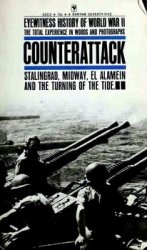Lightweight cannons were not the only i rearms employed by the soldiers
in Charles’s invasion force. Possibly as many as one in ten of them carried
portable, hand-held guns most commonly referred to as arquebuses.
Extremely little is known about their early development. But most modern
scholars think they evolved alongside cannons, starting in the early
1300s.
h e i rst versions of hand-held i rearms were made from brass or
bronze, measured 8 to 12 feet (2.4 to 3.6 m) in length, and were very
heavy and awkward to use. To i re these weapons, gunners had to
rest them on standing poles. A soldier inserted some gunpowder into
the front of the barrel, followed by a stick to push the powder down
tightly. Next, he slipped in the shot, most often a
small lead ball. Finally, he stuck a red-hot metal wire
into a little hole in the back of the barrel, thereby
igniting the powder and i ring the weapon. Around
1400, a piece of burning rope called a “match” replaced
the wire.
In the course of the following two centuries, these
primitive guns underwent a steady series of advances.
h ey became shorter and much more lightweight,
so a gunner was able to i re one without the aid of
a pole. h e so-called matchlock mechanism was added in the mid-
1400s. It consisted of a smoldering match held in place by a metal
lever on the top of the barrel. Pulling the trigger caused a spring to
snap and touch a bit of gunpowder in a small pan. h e resulting l ash
made a larger quantity of powder inside the barrel explode, thereby
i ring the gun.
By the late 1400s a long, slim, lightweight version of the weapon,
the arquebus—the ancestor of the musket—was widely employed by
foot soldiers across Europe. At that time such hand-held guns were already
rapidly replacing crossbows, spears, and slings, just as cannons were
steadily making catapults and other traditional artillery obsolete. h e
complete transition from old-fashioned weapons to i rearms in warfare
was destined to last another couple of centuries. But when the medieval
era gave way to early modern times circa 1500 or so, the face of battle
had already been mightily transformed. It had changed in ways that early
medieval Europeans, and even the later, farsighted military leader Duke
William, the victor of Hastings, could never have foreseen.




 World History
World History









